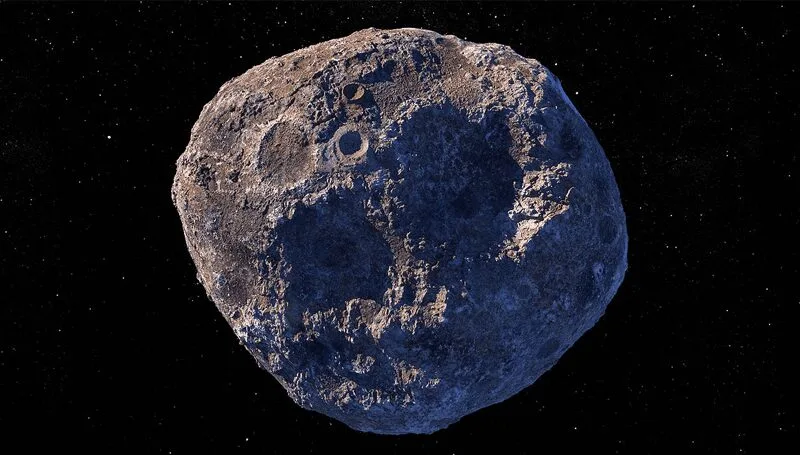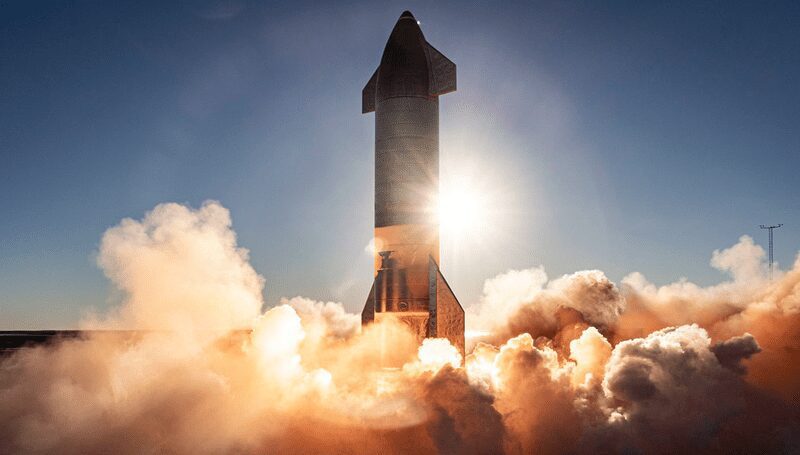The New Space Economy: The Fierce Race for Asteroid Resources

For generations, asteroids and asteroid resources were an object of fascination for astronomers, but largely irrelevant to the average modern human.
Today, space exploration is becoming more economically feasible, creating a burgeoning “space economy” of private space companies. These companies are always looking for a return on investment, and have set their sights on asteroid resources as a potential source of revenue.
Our current economic systems on Earth are oriented towards ever-expanding growth, and space represents the new frontier. New ground to expand.
The Lure of the Asteroids: Why Mine Space?
Asteroids are famously abundant in valuable materials, and are actually the source of many precious metals on Earth. The ability to mine them directly can have potential rewards not just for space companies, but for various industries on Earth and in space.
Precious Metals
Certain types of asteroids, especially a group called M-type asteroids, are believed to contain plenty of Platinum Group Metals (PGMs) such as platinum, palladium, rhodium, iridium, and ruthenium, as well as gold and nickel-iron.
These metals are vital for a range of industries, including electronics, fuel cells, and specialized alloys. However, they are relatively rare on Earth and their extraction process is often politically fraught and environmentally damaging.
Getting these metals from space has the potential to increase the global supply, bringing costs down and making technologies more available, while also preserving Earth’s delicate ecosystem.
Water (H2O)
In theory, water can be extracted from carbonaceous C-type asteroids in the form of ice. Water is the new “oil” of the space race, more precious than any other material. This is for two reasons:
Life support: water is essential for life support on long-duration manned missions in space, especially if humans are planning on building space colonies. Transporting large quantities of water from Earth is a logistically and economically prohibitive.
Rocket fuel: water can be broken down into its main elements hydrogen and oxygen, the fundamental components of cryogenic rocket propellants. The ability to extract ice water from space and process it into fuel on the go can make space missions more efficient and longer-lasting.
Construction Materials
Asteroids contain basic metals like iron, nickel, cobalt, and silicates. These could be useful for building constructions in space, such as satellites, orbiting facilities, solar power plants, space stations and even colonies. This would reduce reliance on Earth resources.
The Emerging New Space Economy: Drivers and Landscape
Space mining is becoming more feasible due to a combination of factors:
Declining Launch Costs
The primary reason for this renewed interest in space exploration. Companies like SpaceX are building reusable rockets, such as the Falcon 9. Having reusable space equipment like this is going to reduce launch costs and make repeated trips and space mining more feasible.
Private Space Companies and Space Investment
The space economy is no longer confined to government efforts, as private space companies are on the rise. These innovative players range from launch providers to satellite operators, and now asteroid mining. Startups in this area are attracting significant funding, and asteroid mining in particular can provide a lucrative return on this space investment.
Technological Advancements
Beyond reduced launch costs, other unexpected technological developments can make space exploration easier, such as advancements in robotics, AI, and autonomous systems. These will help humans navigate environments that are otherwise hostile to life. Deep-space communication technologies are also improving, which helps monitor and control distant space mining operations.
The Race Heats Up: Key Players and Strategies
The race to tap into asteroid resources is intensifying, with a mix of established players, ambitious startups, and governmental agencies laying the groundwork.
Pioneers (and those who struggled)
The early days of the space economy saw companies such as Planetary Resources and Deep Space Industries. These pioneers ignited the public’s enthusiasm in space exploration and laid the groundwork for today’s landscape. However, they faced significant hurdles due to the massive costs associated with space travel. This led to them to cease operations or be acquired by other players before reaching commercial success.

Current Contenders and Strategies
While dedicated space mining companies are still navigating the harsh landscape, there are several space companies that are paving the way:
SpaceX/Starship: Although they aren’t focused solely on asteroid resources, their developments in the space economy in general enables smaller players to engage. They help create the necessary infrastructure with massive and reusable spacecrafts, lowering the cost of transportation. Also, their ambitions toward Mars colonization will pave the way for the asteroid mining industry, including extracting ice and construction materials to sustain the project.
Government agencies: Agencies like NASA (USA), ESA (Europe), JAXA (Japan), and CNSA (China), are not aiming for commercial space mining. However, their space exploration also paves the way for private companies and future space investments. They also provide free data about the composition and accessibility of asteroid resources. Their ongoing research will be invaluable to this young industry.
Emerging Startups: There’s a new wave of high-tech startups that cover niche areas within the asteroid resources mining chain. For example, some are developing advanced robotics that can be used in space, while others focus on resource processing and transportation.
Some companies are adopting a “Moon-first” approach. If they can prove their technology to be viable on the lunar surface, for example ice water and other resource extraction, this will build the necessary infrastructure for eventually venturing into more distant, resource-rich asteroids.
Legal, Ethical, and Practical Considerations
Despite these technological advances, the space economy still faces significant hurdles. The immense distance of asteroids poses logistical and financial hurdles, and the harsh environment presents technological challenges. Autonomous robots that can mine in space, and off-world material refinement technology are still in their early stage.
Legal and ethical dilemmas
The Outer Space Treaty of 1967 prohibits the national appropriation of celestial bodies. However, some people dispute the private extraction and ownership of asteroid resources, claiming that extracting resources is not the same as appropriating an entire celestial body.
There’s also the issue of potential conflicts. Who actually owns space? There’s a need for international agreements and frameworks to govern property rights
The introduction of vast quantities of precious metals from space will have tremendous effects on the mining industry on Earth, causing prices to plummet. These industries will have to adapt.
There’s also the potential environmental impact on space. For example, creating orbital debris from mining operations or contaminating space objects.




